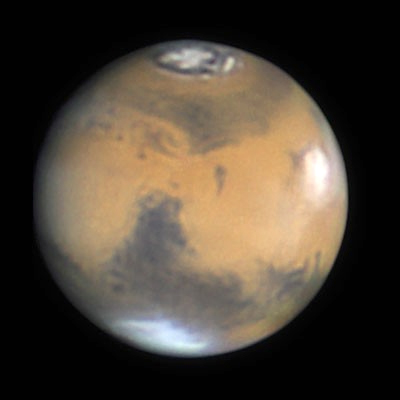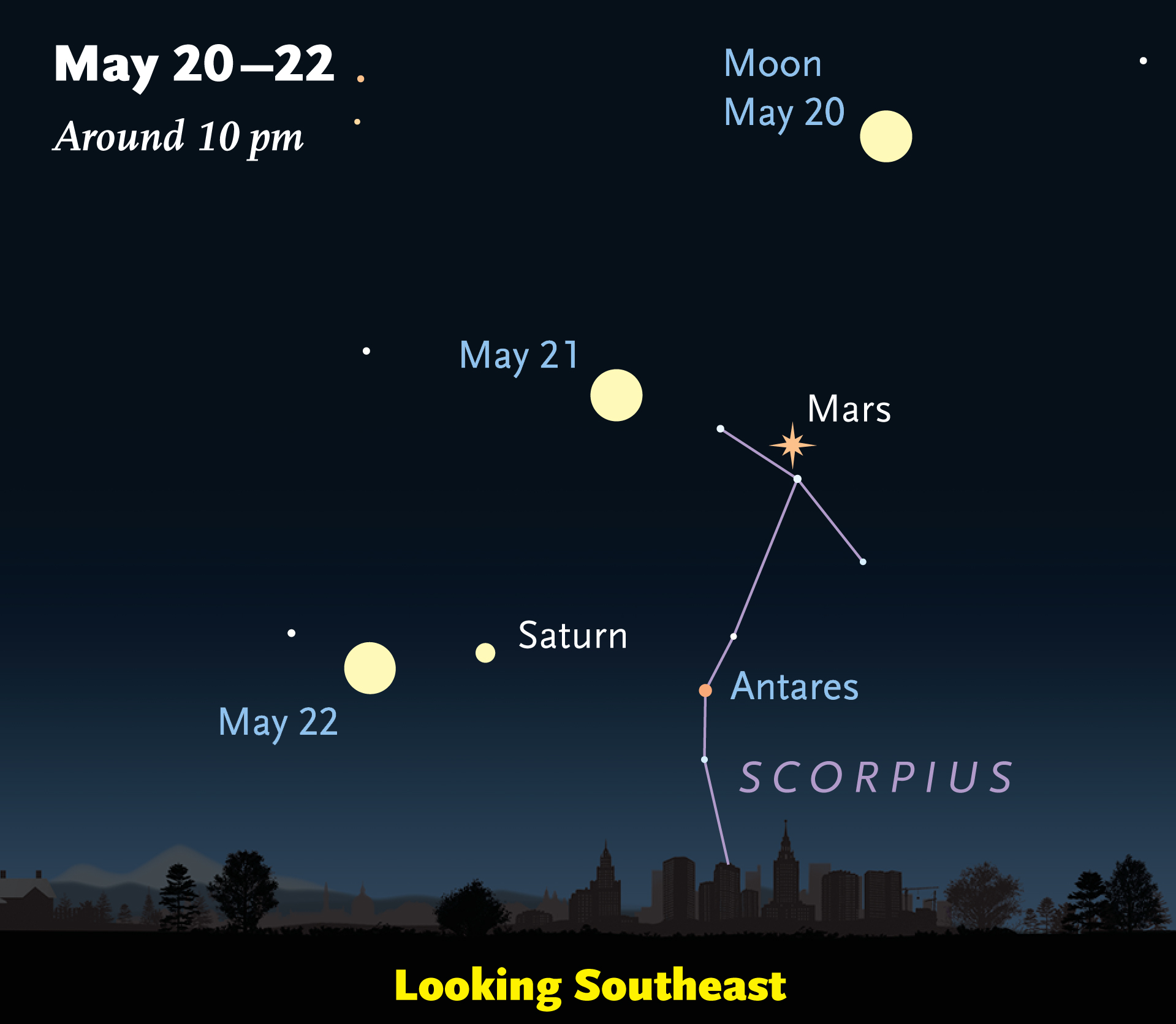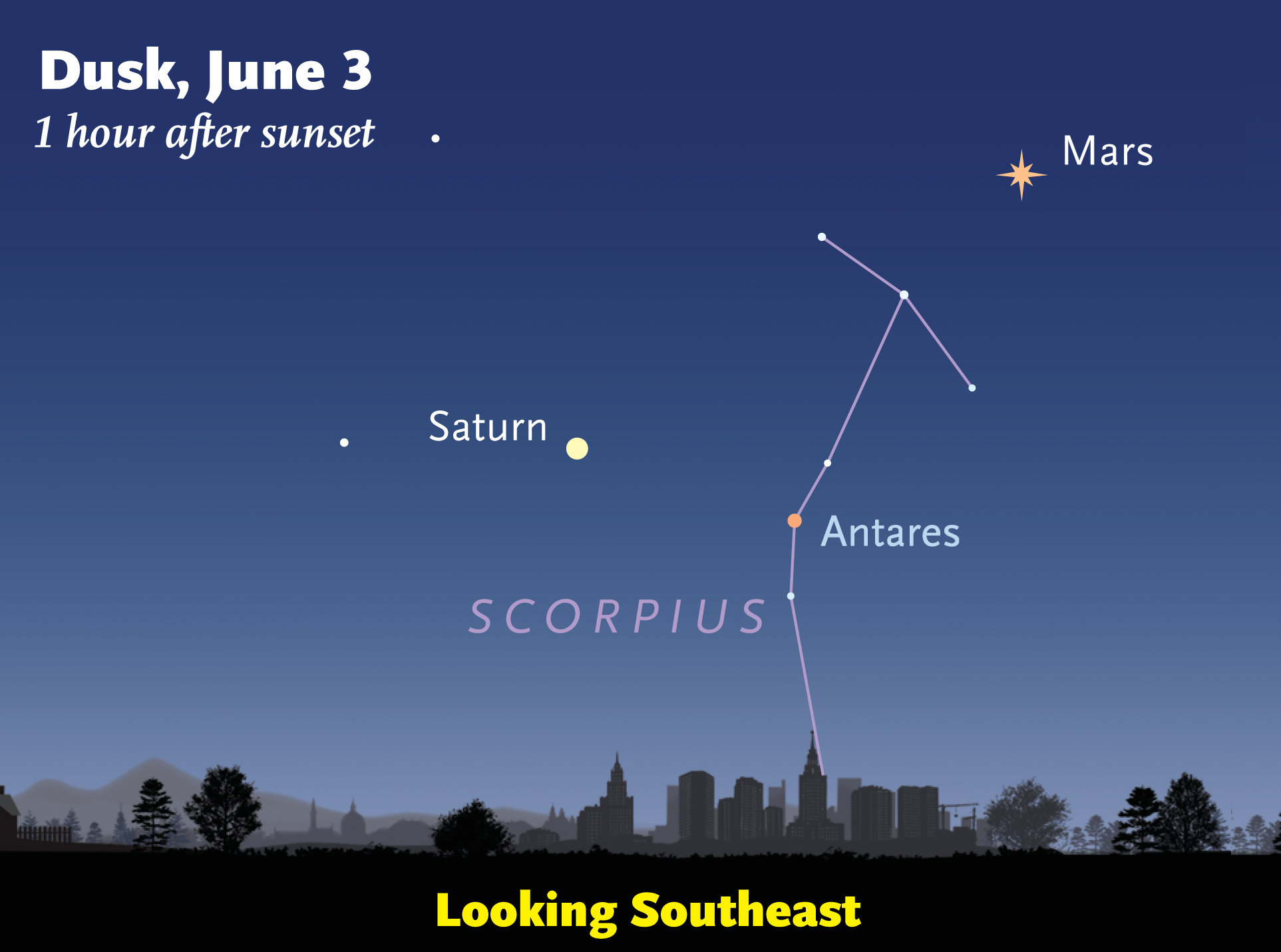Contact:
Alan M. MacRobert, Senior Editor
855-638-5388 x22151, [email protected]
| Note to Editors/Producers: This release is accompanied by publication-quality illustrations; see details in the captions below. |
Look low in the southeast at nightfall, and an unusually bright, fire-yellow "star" will be staring back at you. It's the planet Mars, closer to Earth now than it has been since November 2005.

Mars is exactly its closest on May 30th, 47.2 million miles from Earth. But it remains within 48 million miles of us from now through June 12th. So it will stay essentially this close and bright through the rest of May and the first two weeks of June.
"Just look southeast after the end of twilight, and you can't miss it," says Alan MacRobert, a senior editor of Sky & Telescope magazine. "Mars looks almost scary now, compared to how it normally looks in the sky."
Mars comes to opposition, appearing directly opposite the Sun as seen from Earth, on the night of May 21st, right as the full Moon shines close to it. Opposition and closest approach are offset by several days due to the ellipticity of Mars's orbit.
This is not the nearest that the Red Planet ever comes to us. On August 27, 2003, the centers of Earth and Mars were only 34,646,418 miles apart, putting the planet closer than it had been in several thousand years. And Mars will pass nearly that close again in July 2018.
Amateur astronomers have been waiting years for Mars to come this close. This planet normally appears tiny even in the best telescopes. Even now its surface markings, clouds, and polar caps can be rather subtle and fleeting in a telescope’s eyepiece. However, "Amateur astronomers have perfected ways to take incredibly fine images of the planets through their telescopes," says Sky & Telescope senior editor J. Kelly Beatty. "These pictures show much more than you can see by eye through the same scope."
Mars, Saturn, and Antares
There’s more going on in the vicinity of Mars. Joining it to form a triangle of points in the sky are the planet Saturn and the red supergiant star Antares, as shown in the illustrations below. And on Friday through Sunday May 20-22, the full Moon joins the crowd.
To find Antares, says MacRobert, "look below Mars by about the width of your fist at arm's length. If Antares is still too low, wait a while and everything will rise higher. Antares is fainter but it also has a fiery color." In fact its name, bestowed by the ancient Greeks, means "anti-Mars" or rival of Mars — because they compete for colorfulness.
Left of Antares, by less than a fist-width, you'll find Saturn. It's a little brighter and pale yellow-white.
Notice that Mars and Saturn glow steadily, while Antares twinkles. That's because stars, unlike planets, appear from Earth as extremely tiny points, too small to resolve even with a telescope. That means their light is easily distorted by the tiny temperature ripples that constantly course through Earth's atmosphere. Most twinkling arises within just a few miles of your eye.
Scattered around the area are lesser stars of the constellation Scorpius. Mars passes especially close to one of them, Delta Scorpii, from May 18th through 21st.
Despite its brilliance, Mars is not quite the brightest planet now in the evening sky. That's Jupiter, shining white high in the southwest. Jupiter is currently 10 times farther from us than Mars is, and it's also farther from the illuminating Sun. But it makes up for this greater distance with sheer size: Jupiter is 20 times larger in diameter than Mars.
Now in its 75th year of publication, Sky & Telescope is recognized worldwide as a trusted, authoritative resource for news of astronomy research, backyard sky sights and astronomy projects, and telescopic equipment. Sky & Telescope and SkyandTelescope.com are divisions of F+W, a content and e-commerce company.
Permission is granted for one-time, nonexclusive use of the illustrations below in print, online, and broadcast media, as long as appropriate credit (as noted in each caption) is included. Web publication must include a link to SkyandTelescope.com.

Sky & Telescope diagram.

Sky & Telescope diagram.
 0
0
Comments
You must be logged in to post a comment.